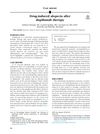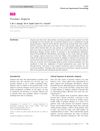Sebaceous Gland Atrophy Due to Seborrheic Dermatitis in a Patient with Alopecia: A Potential Pitfall
April 2024
in “
Journal of cutaneous pathology
”

TLDR Skin conditions like seborrheic dermatitis can make it harder to correctly diagnose hair loss because they can cause the oil glands in the skin to shrink.
The case study discusses a 23-year-old female patient with non-scarring hair loss and seborrheic dermatitis, a common skin condition that mainly affects the scalp, causing scaly patches, red skin, and stubborn dandruff. The patient's histopathological findings showed mild androgenetic alopecia (a common form of hair loss in both men and women) and seborrheic dermatitis with significant sebaceous gland atrophy. Sebaceous gland atrophy, a condition where the sebaceous glands shrink and produce less sebum, is not specific to psoriasis and can occur in other inflammatory skin conditions of the scalp. The study concludes that in patients with seborrheic dermatitis, sebaceous gland atrophy can complicate the evaluation of alopecia biopsies and should be recognized as a potential pitfall. Therefore, seborrheic dermatitis should be included in the differential diagnosis of alopecia biopsies showing prominent sebaceous gland atrophy.












